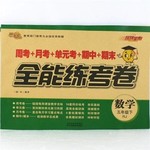题目内容
When a person walks, the movement of his head, trunk, hipbones and limbs are all reflected in changes in his body. A computer 1 these changes into a database. Later, the computers can 2 identify him according to these changes. This is a new biological identification method and it can quickly identify an examinee 3 disturbing him. It's especially suitable for use in airports and supermarkets.
Everybody's voice is 4 . When a person's voice is recorded by an instrument, its voice frequency spectrum is called his sound print. Like a fingerprint, everybody's sound print is different. How can computers 5 his sound? First, his voice is recorded, which allows the computers to become familiar with his voice. It will then turn his sound characteristics into a 6 of digits. These digits represent the frequency, pitch and rhythm of the person’s voice. These are the 7 on which the computers can distinguish1 his voice from 8 .
When that person needs to be identified, after he says only one word or two, the computers can identify him. The computers can even identify sounds coming 9 the wires. This will provide a 10 guarantee to electric banks and electric purchases.
We often bring ID cards2, work cards, or driver licenses with us to prove our identity. If all these cards are forgotten or lost, how can we prove 11 we are? In fact, it's not difficult to prove whom you are, because your body 12 has identifying markers. Some are physiological features, such as fingerprints, sounds, facial types and eye color. The computer can help to identify you. Suppose your features have already been stored in the database3. To identify you, we have to take your picture with a camera and send it to a computer for 13 . First, the computer needs to reposition this picture according to the position of your eyes4, and then starts to read the message of your physiological features such as the 14 of your pupil5 to the whites of your eyes6 and the shape of his nose. Next, it seeks matching records from the database. Finally, it makes a 15 .
A. checks B. stores C. revises D. modifies
A.nearly B. approximately C. roughly D.accurately
A.without B. with C. for D. in
A. identical B. similar D. unique D. sole
A.hear B. understand C. distinguish D. record
series B.package C. line D. pair
A, origin B. cause C. reason D. basis
A. othre’s B. another’s C. each other’s D. one another’s
A. at B. on C. in D. through
A. cleverer B. tidier C. smarter D. safer
A. how B. whom C. what D. where
A. oneself B. themselves C. ifself D. himself
A.processing B. copying C. coloring D. revising
A. size B. type C.ratio D. shapr
A. recommendating B. decision C. proposal D. contribution
【小题1】B
【小题2】D
【小题3】A
【小题4】C
【小题5】C
【小题6】A
【小题7】D
【小题8】B
【小题9】D
【小题10】D
【小题11】B
【小题12】C
【小题13】A
【小题14】C
【小题15】B
解析:
【小题1】从上下文的意思判断,作者说的是往资料库里存储肢体的变化的资料。存储的英语词是 store,所以要选 B.check( 检查)、revise (修正) 和 modify(修改) 与上下文的意思都配不上。
【小题2】选项 A 的 nearly (不完全地)、选项 B 的 approximately (近似地)、选项C的 roughly (概略地) 都不可能与电脑的快速、准确的性能联系起来,而且约摸地辨认也不会有实用价值。只有选 D (accurately 准确地) 才符合逻辑。
【小题3】前面句子说这是一项新的生物学的辨认技术,最后一句说,这项新技术适合机场和超市使用。以此推论,这是个好的技术。能辨认人而又不去打搅 (without disturbing) 被辨认人的技术才是好技术。选项 A 是本题的答案。
【小题4】辨认依靠的是被辨认人具有的特性,每个人的声音也有其独特性和惟一性。所以,选项 C 的 unique(惟一的)反映了这个道理,所以是答案。
【小题5】本段前面几句是说人的声纹与指纹一样,可以用来辨认人。后面几句介绍电脑如何利用声纹辨认人。所以填入"空5"的词一定是选项 C 的 distinguish.其它三个选项提供的词,无论用哪一个都不合适,因为后面的句子都不是回答 "How can computers hear/understand/record his sound?"这些问题的。
【小题6】在句子 "It will then turn his sound characteristics into a ? of digits"(然后电脑将他的声音特征转换为 ? 的数码) 中,填入"空6"的词似是相当于汉语中的量词。查看四个选项,只有 a series of digits (一系列数码) 最合适。a package of (一箱的)、a line of (一行的)、a pair of (一双的) 与 digits 都不搭配。
【小题7】从意义上分析,选项 D 的 basis 是最合适的。而且 basis 与介词 on 也搭配,组成 on this basis (在此基础上)。其它三个选项的词不仅与上下文的意思不连贯,而且与 on 也不搭配。
【小题8】句子的意思是,电脑能够将某人的声音与他人的声音区分开来。答案是选项 D 的 another's.each other's (彼此的声音) 和 one another's (彼此的声音) 明显不对。other's 也不对,如果要用, 就得是 others'.
【小题9】句子的意思是,电脑还能够识别通过电线传过来的声音。through 是合理的选择。所以,D是答案。
【小题10】本题解题的思路最好用排除法。如果选用 cleverer/tidier/smarter 与 guarantee 搭配,意思上有点怪,只有 safer guarantee (更安全的担保) 最合理。
【小题11】电脑要证明的是我们是谁,即我们的身份,所以只能用 whom we are.B 是答案。
【小题12】body 的代词是 it,反身代词是 itself.句子的意思和语法都要求用反身代词,即 itself.C是答案。
【小题13】后面的句子说电脑对输入的人像进行多项处理 (first, then, next, finally)。要表达"处理"这层意思的英语词是 processing. A 是答案。
【小题14】选用 size、type 或 shape 都不行。如果用了, "your pupil to the whites of your eyes"中的 to 就与 size、type 或 shape 不搭配。只有选 ratio, 意思上和搭配上都对。ratio的用法是 ratio of…to…。
【小题15】电脑辨认的结果一定要安全可靠,不能含糊其词。所以,proposal, recommendation 都不会是答案。contribution (贡献) 的意思与上下文接不上。所以,只有 选项B 的 decision 才是答案。

 全能练考卷系列答案
全能练考卷系列答案 一课一练课时达标系列答案
一课一练课时达标系列答案New rules will let millions of Americans know where more of their food comes from.The law is known as COOL—Country of Origin Labeling.
American Congress first passed the law in 2002.Stores have had to label seafood by country of origin since 2005.But industry pressure delayed other requirements until last week.
Products that must now be labeled include fresh fruits and vegetables, muscle meats and some kinds of nuts.But the rules are complex, and many foods are excluded.For example, organ meats are free to be labeled.So are processed foods, including cooked or smoked food.
The United States has imported more and more food in recent years to save money and expand choices.Country-of-origin labeling has become more common lately but has still been limited in many stores.
Food safety is one reason why some shoppers pay close attention to where foods came from.For example, when a large number of people recently got sick from salmonella(沙门菌病), officials blamed peppers from Mexico.Yet the last big food scare involved spinach (菠菜) grown in California.But labeling is also a way for people to know they are getting what they want.Some want to buy local foods or foods from a particular country.
The country-of-origin labeling law gives stores 30 days to correct any violations that are found.Stores and suppliers that are found to be deliberately violating the law could be fined 1000 dollars per violation.Federal inspectors are not to take action to enforce the law for six months to give time for an education campaign.
Some food safety activists say they are generally pleased with the law.They call it a good step that will give people more useful information.
【小题1】Why has more and more food been imported to the United States in recent years?
| A.Because it is economical and provides people with more choices. |
| B.Because the United States is short of food supply. |
| C.Because Americans need more and more food recently. |
| D.Because foreign food is of higher quality than native food. |
| A.Stores have to label food by its producing date from now on. |
| B.The country-of-origin labeling has to be marked on more food. |
| C.Stores have to label seafood by country of origin. |
| D.Labeling of food should include more useful information. |
| A.right now | B.in a month |
| C.in three months | D.in half a year |
| A.they are curious about the country of the food origin |
| B.they are particular about the tastes of the food |
| C.they are concerned about food safety and want to get what they want |
| D.most of the shoppers are food safety activists themselves |